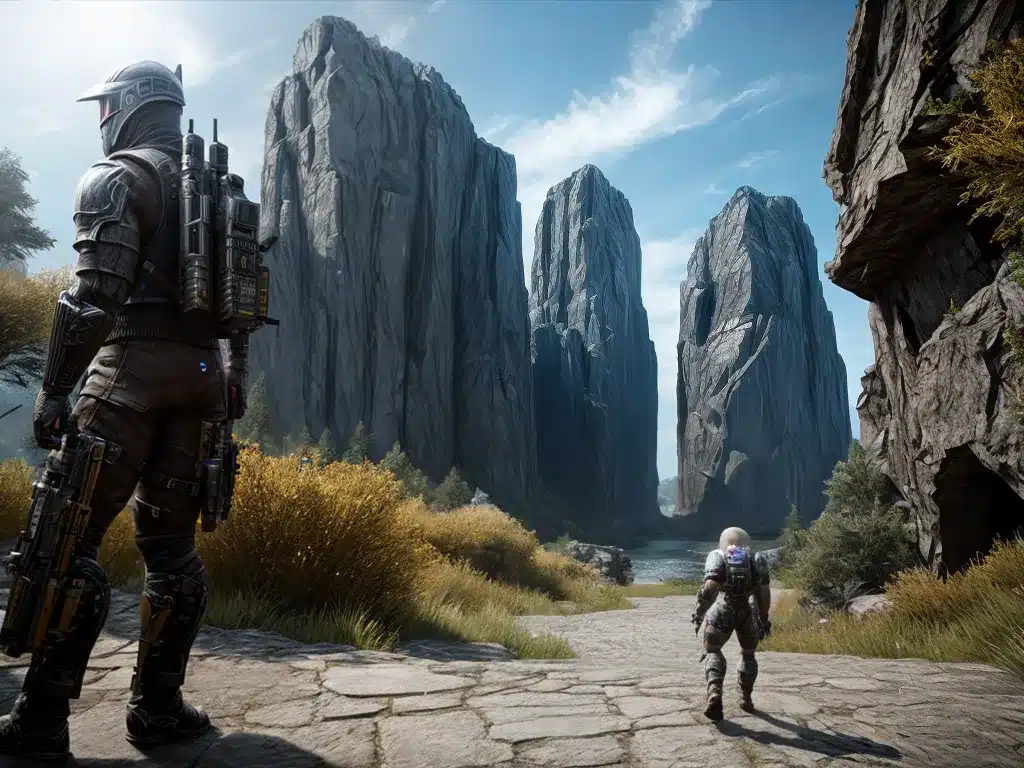
Introduction
Unreal Engine 7 was recently announced by Epic Games, representing the latest iteration of their widely used game engine. This new version promises cutting-edge graphical capabilities and exciting new features for game developers. However, it raises the question – with modern games already boasting stunning visuals, can graphics get any better?
In this article, I will provide an in-depth look at Unreal Engine 7’s graphical enhancements and how they push the boundaries of realism. We’ll also examine the diminishing returns of improved graphics and whether further advancements can translate into better gameplay experiences.
Unreal Engine 7’s Graphical Improvements
Unreal Engine 7 introduces key graphical features to achieve more realistic and immersive visuals:
Nanite
Nanite allows artists to create games with massive amounts of geometric detail. Assets are no longer limited to polygon budgets and can have as much detail as the source art. This enables photorealism on par with movie CG and eliminates distracting popping or LOD transitions.
Lumen
Lumen is a fully dynamic global illumination solution that immediately reacts to scene changes and edits in real-time. This takes away the need to wait for lightmap baking and provides natural bounce lighting. The indirect lighting adapts on the fly and gives accurate reflections from Glossy and Metal surfaces.
Virtual Shadow Maps
Unreal Engine 7 features virtual shadow maps for movable suns and lights. This gives accurate shadows from multiple sunlight sources influencing one scene. The shadows have correct penumbra and softness based on the sun angle and distance.
Temporal Super Resolution
Temporal super resolution uses machine learning to increase rendering resolution beyond the native resolution of the display. This achieves a sharper and more detailed image for smoother edges and textures.
Atmospheric Effects
Volumetric fog and cloudscapes create more immersive scenes in Unreal Engine 7. Realistic atmospherics better convey scale and mood through advanced ray marching techniques.
Diminishing Returns of Improved Graphics
While Unreal Engine 7 enables greater graphical fidelity, there are diminishing returns to ever-better visuals:
-
Extremely high polygon counts and details may not register well in fast gameplay. Nanite assets can be expensive to produce.
-
Dynamic lighting still has limitations in accuracy and performance cost. Some baked effects may look better.
-
Higher display resolutions don’t necessarily improve visual appreciation. Low pixel density can make the imagelook softer.
-
Photorealism clashes with deliberate stylization and direction in some games. Non-realistic rendering can look more appealing.
-
Gameplay, story, audio design and other elements ultimately matter more than graphics alone. A good looking game can still play poorly.
So while modern graphics keep improving through engines like Unreal 7, their impact lessens past a certain point of diminishing returns. Visuals should support the overall game, not detract from the bigger picture.
The Future of Game Graphics
Where do graphics go from here? Some potential innovations in the future include:
-
Ray tracing – More ray traced effects for accurate lighting, reflections, shadows etc. This can be accelerated by dedicated hardware like Nvidia RTX cards.
-
AI rendering – Leveraging AI to automatically increase image quality, textures, animations etc. Nvidia’s Deep Learning Super Sampling uses this approach.
-
Photogrammetry scanning – Creating highly detailed 3D scans of real objects and locations using camera arrays. This helps mimic reality.
-
Volumetric displays – Displaying interactive volumetric light fields without requiring stereoscopic glasses. This adds depth and realism to the image.
-
New display technologies – Self-illuminating and high dynamic range displays like microLED and OLED can show a wider gamut of colors and contrast.
While these technologies will continue pushing the limits of fidelity, greater visuals alone cannot make a game successful. Gameplay innovations, controls, audio and narratives determine the quality of the player’s experience.
Conclusion
Unreal Engine 7 enables state-of-the-art graphics through new features like Nanite, Lumen and Virtual Shadow Maps. But as resolutions and polygon counts increase, their benefits diminish past a certain point. While realism keeps improving, stylized rendering and strong aesthetics often look more appealing. Graphics should ultimately serve gameplay – the heart and soul of any good game. Though new technologies will drive greater fidelity, they need to complement the overall vision. Gameplay, storytelling and innovation remain vital for an engaging, memorable experience.












